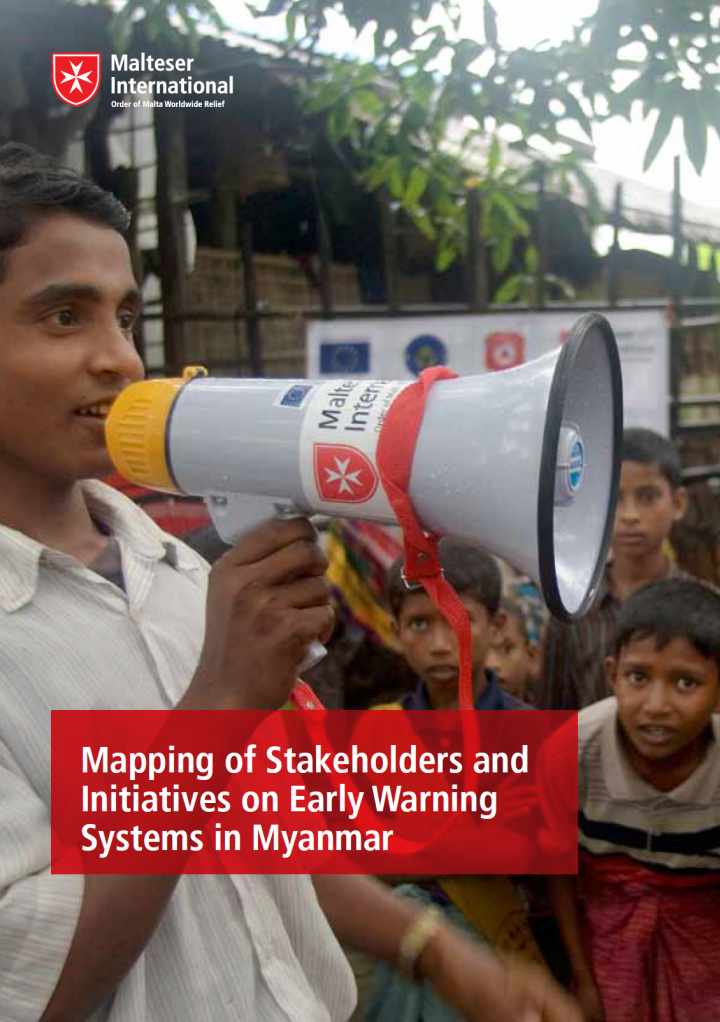Mapping of Stakeholders and Initiatives on Early Warning Systems in Myanmar Malteser International (0)
Combating the risks to life and livelihoods caused by climate change and increasing numbers of natural
hazards has become a global challenge, of particular concern in Asia. Malteser International has been work-
ing in Myanmar since 2001 with a focus on humanitarian assistance in disaster-prone areas. Since Cyclone
Nargis hit in 2008, prevention and risk reduction have become significant components of Malteser Interna-
tional’s work nationally. To this end, Malteser International is collaborating with the Government of the
Union of Myanmar (GoUM) at multiple levels and with the Disaster Risk Reduction Working Group (DRRWG)
in enhancing early warning capacities. Early warning systems are defined by the United Nations Office for
Disaster Risk Reduction as “The set of capacities needed to generate and disseminate timely and meaningful
warning information to enable individuals, communities and organizations threatened by a hazard to prepare
and to act appropriately and in sufficient time to reduce the possibility of harm or loss.”1
The Global Initiative on Disaster Risk Management (GIDRM) launched by the German Federal Ministry for
Economic Cooperation and Development (BMZ) brings together stakeholders from Germany and Asia-Pacific
and provides a forum for dialogue and mutual learning on disaster risk management. One of its priority areas
is to enhance inclusive disaster response, preparedness structures and expanding effective Early Warning
Systems (EWS). GIDRM backs the co-creation and piloting of tangible solutions and facilitates the exchange
of know-how, experiences and competence. It also supports the development of strategic guidelines and
international standards. The GIDRM now includes eight Asian countries and is coordinated by the Deutsche
Gesellschaft für Internatinale Zusammenarbeit GmbH (GIZ).
During GIDRM’s September 2013 fact-finding mission to Myanmar, senior GoUM officials showed high
interest in engaging with the initiative, in particular on issues of Early Warning and Civil Protection. This
mapping exercise was commissioned by Malteser International under GIDRM. It is presented as a first step to-
wards supporting GoUM in information-gathering under the Myanmar Action Plan for Disaster Risk Reduction
(MAPDRR), in particular under Components 2: Risk Assessment, 3: Multi-hazard Early Warning System and 4:
Preparedness at all levels, and especially in implementing Sub-Component 3.4: Enhanced Flood Monitoring
and Forecasting Capacities at Township Levels.
Bibliographic information
Malteser International (0). Mapping of Stakeholders and Initiatives on Early Warning Systems in Myanmar Malteser International
Filter / Tags
English
Downloads
Mapping of Stakeholders and Initiatives on Early Warning Systems in Myanmar
Type: application/pdf
Size: 1.15 MB

